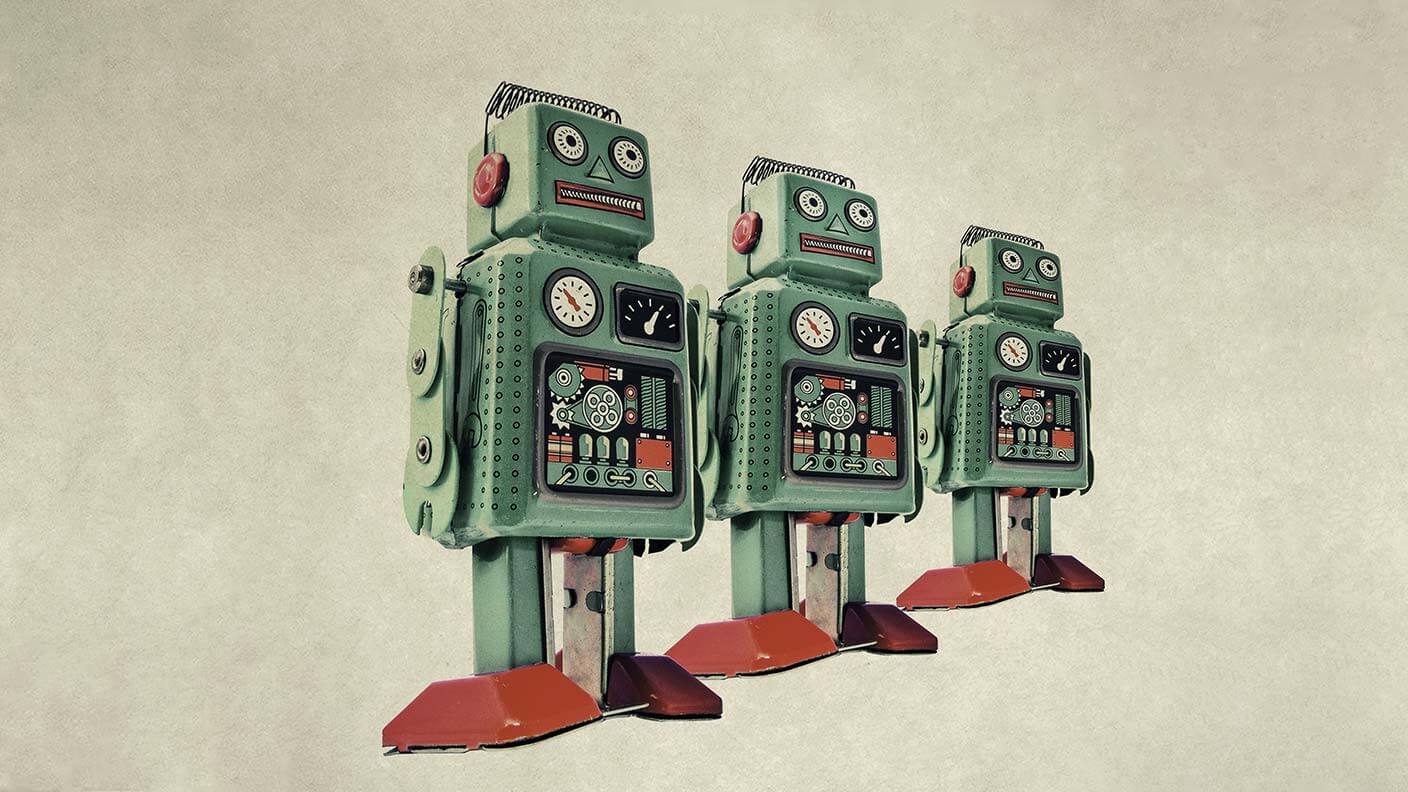The robots are coming, and they’ll probably take your job when they get here. Oh wait—have you heard that recently?
copyright by singularityhub.com
 As recently as, say, yesterday? In the news, or from a coworker, or in a sinister dystopian movie, maybe?
As recently as, say, yesterday? In the news, or from a coworker, or in a sinister dystopian movie, maybe?
Sounding the alarm about job losses to automation has become commonplace—in fact, it’s more of a nonstop siren these days. Multiple Democratic presidential candidates are featuring their plans to combat Big Tech and solve technological unemployment as talking points of their campaigns. Dread of a robot-dominated future is mounting.
One of the most widely-referenced and panic-inducing figures on the topic came from a 2013 paper by two Oxford economists, Michael Osborne and Carl Benedikt Frey. Their research found that up to 47 percent of American jobs were at risk of being automated by the mid-2030s. According to The Economist , the paper has been cited in over 4,000 articles, unnerving workers in all sectors of the economy and justifying catastrophic outlooks.
But last month Frey, a Swedish economic historian, published a book called The Technology Trap that aims to dispel some of the hysteria the paper raised. Not only must the 47 percent figure be deconstructed in a more nuanced manner, he says, but the public’s acceptance of or resistance to technological advancement could play a major role in job creation .
What the Paper Said
The research underlying the 2013 paper, aptly titled “The Future of Employment,” aimed to quantify how progress in tech could impact jobs. The authors classified 702 occupations using a machine learning algorithm.
To train the algorithm, they chose 70 jobs whose computerization label they felt confident about—such as delivery drivers, maids, civil engineering technicians, sheet metal workers, and utility meter readers—and labeled them as automatable or non-automatable. For each job, they considered the question, “Can the tasks of this job be sufficiently specified, conditional on the availability of big data, to be performed by state-of-the-art computer-controlled equipment?”
The authors noted that automation will depend partly on engineers overcoming computerization “bottlenecks” in increasingly complex areas, starting with perception and manipulation, then moving to creative intelligence, and finally tackling social intelligence.
Thank you for reading this post, don't forget to subscribe to our AI NAVIGATOR!
Unsurprisingly, jobs requiring creative and social intelligence were deemed least likely to be automated: recreational therapists, mechanic and repair supervisors, and emergency management directors topped the list—no robot will be stealing their jobs anytime soon. Dentists, dietitians, and elementary school teachers can settle in for the long haul, too.
On the other end of the spectrum—or in this case, the long, long list—some of the jobs most susceptible to automation were insurance underwriters, telemarketers, tax preparers, and sports officials like referees.
Taken as a whole, the authors found 47 percent of US employment at risk of being disrupted by automation.[…]
read more – copyright by singularityhub.com


The robots are coming, and they’ll probably take your job when they get here. Oh wait—have you heard that recently?
copyright by singularityhub.com
Sounding the alarm about job losses to automation has become commonplace—in fact, it’s more of a nonstop siren these days. Multiple Democratic presidential candidates are featuring their plans to combat Big Tech and solve technological unemployment as talking points of their campaigns. Dread of a robot-dominated future is mounting.
One of the most widely-referenced and panic-inducing figures on the topic came from a 2013 paper by two Oxford economists, Michael Osborne and Carl Benedikt Frey. Their research found that up to 47 percent of American jobs were at risk of being automated by the mid-2030s. According to The Economist , the paper has been cited in over 4,000 articles, unnerving workers in all sectors of the economy and justifying catastrophic outlooks.
But last month Frey, a Swedish economic historian, published a book called The Technology Trap that aims to dispel some of the hysteria the paper raised. Not only must the 47 percent figure be deconstructed in a more nuanced manner, he says, but the public’s acceptance of or resistance to technological advancement could play a major role in job creation .
What the Paper Said
The research underlying the 2013 paper, aptly titled “The Future of Employment,” aimed to quantify how progress in tech could impact jobs. The authors classified 702 occupations using a machine learning algorithm.
To train the algorithm, they chose 70 jobs whose computerization label they felt confident about—such as delivery drivers, maids, civil engineering technicians, sheet metal workers, and utility meter readers—and labeled them as automatable or non-automatable. For each job, they considered the question, “Can the tasks of this job be sufficiently specified, conditional on the availability of big data, to be performed by state-of-the-art computer-controlled equipment?”
The authors noted that automation will depend partly on engineers overcoming computerization “bottlenecks” in increasingly complex areas, starting with perception and manipulation, then moving to creative intelligence, and finally tackling social intelligence.
Thank you for reading this post, don't forget to subscribe to our AI NAVIGATOR!
Unsurprisingly, jobs requiring creative and social intelligence were deemed least likely to be automated: recreational therapists, mechanic and repair supervisors, and emergency management directors topped the list—no robot will be stealing their jobs anytime soon. Dentists, dietitians, and elementary school teachers can settle in for the long haul, too.
On the other end of the spectrum—or in this case, the long, long list—some of the jobs most susceptible to automation were insurance underwriters, telemarketers, tax preparers, and sports officials like referees.
Taken as a whole, the authors found 47 percent of US employment at risk of being disrupted by automation.[…]
read more – copyright by singularityhub.com
Share this: